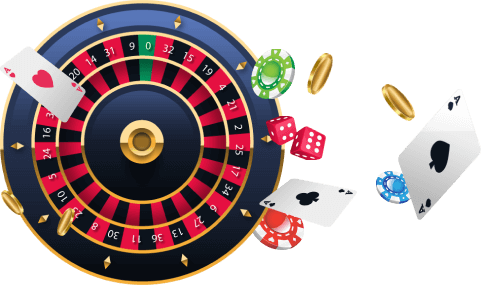Low Bankroll Roulette Strategies
If you think you need a large bankroll to benefit from roulette strategies, you are wrong. Some progressive strategies require a certain size bankroll to work, but not all of them do. There are also strategies developed for roulette players with a limited budget, and if you choose the right one for your playing style, they can be useful for you too. Here, we will explain in detail the roulette strategies suitable for low-roller players with examples. We recommend that you test them all and choose the one that suits you best.
Romanovsky system
This system was developed by a gambler named Igor Romanovsky and involves placing a series of bets on different areas of the gaming table. The aim here is to cover as many outcomes as possible by placing as few wagers as possible.
In the Romanovsky system, you place multiple bets covering 32 of 37 possible outcomes. This gives you an 86.48% chance of winning on every spin. To place a wager on so many numbers without spending a fortune, you should do the following:
- Place three-unit bets on two of the “Dozen” columns.
- Place two one-unit bets on the non-overlapping corners of the remaining 12 numbers.

Your chance of winning one of the corner bets is 21.62%. In this case, we get a net profit of 1 unit (since all other bets will be lost). The chance of winning one of the Dozen bets is 64.86%. In this case, we still get a 1 unit net profit for the same reason. Our probability of losing is 13.52% and, in this case, we will lose a total of 8 units.
Contra bet system
Contra bet is a variant of the d’Alembert strategy and is also known as “reverse d’Alembert” for the same reason. It is based on even money betting and requires setting a baseline (the amount of wager you will start the game with). In case of a win, the wager will be increased by 1x. In case of loss, it must be reduced by 1x. Let's give an example:
- Let's say you set 10 units as your baseline: ideally, it is recommended to use 1% of your bankroll for this purpose.
- If you win, continue with 20 units on the next spin.
- If you win again, increase the wager to 30 units.
- If you lose, reduce the wager to 20 units.
So, in case of a win, you need to increase by the baseline amount, and in case of a loss, you need to decrease by the baseline amount – simple and practical.
Fisher strategy
It is thought that this strategy was developed by a casino owner named Samuel Fisher in the 19th century. It is based on even money betting and again requires setting a baseline. After a certain number of losses, the baseline must be increased by 3 times. In case of a win, gameplay continues without changing the baseline. Let's explain by giving an example.
- Let's assume you set the baseline as 10 units.
- In case of winning, you do not need to change this wager. Unless you lose four times in a row, you do not raise in case of a loss too.
- However, if you lose four times in a row at any time during the game, you must increase the wager by 3 times for the next spin. You continue this until you score a win, and right after that win, you return to the baseline and repeat the entire cycle.
Conclusion
Any of these strategies may be suitable for players with small bankrolls. Romanovsky is a strategy focused on increasing your chances of winning, and others are bankroll management systems. If you are unsure, you can start with Romanovsky or even use it in conjunction with the wager increase rules of the Contra Bet system. In other words, by combining these systems, you can focus on both increasing your chances of winning and managing your bankroll. In any case, feel free to experiment and decide for yourself which strategy suits you best.


